It is well known that fugitive emissions of methane and landfill gas occur when methane escapes from production facilities, wells, pipes, compressors and other equipment associated with coal mining or natural gas extraction, landfills, and biogas plants. It is obviously very important to reduce fugitive emissions to an absolute minimum.
Why are Fugitive Escapes of Methane So Damaging?
Methane is more than 80 times more damaging to the atmosphere and more powerful than carbon dioxide over a 20-year time frame. A byproduct of the oil and gas industry and agriculture, methane accounts for approximately 25 % of the world's climate warming.
lcenergyreports.com
Fugitive Methane Escapes from Cattle
By 2016 EU emissions from enteric fermentation (methane) (the fermentation of feed during the digestive processes of animals), were reduced by 54 million tonnes of CO2-equivalent or 22 % of the 1990 GHG emissions. Which is quite an achievement!
Over 80 % of the GHG emissions due to enteric fermentation are from the digestive system of cattle. These emissions fell by 22 % over 25 years, but the decrease in GHG emissions primarily took place during the first decade. The emission reduction for the years 2001 to 2016 is equal to only 5 %, which is in line with the small drop, also by 5 %, in head count of bovine animals, which includes cattle, buffaloes and oxen (see the chart below). Data on bovine animals for the EU-28 is not available for years before 2001, because data for a couple of small countries is missing, but based on what is available, the livestock data also shows a drop of around a quarter for the period 1990-2014. via ec.europa.eu
Fugitive emission control is becoming more common as a condition of a facility's operating approval. Accordingly, it is useful to consider a definition that corresponds to those typically applied in other industries. A leak may be defined as a screening concentration of 10,000 PPM or more for the purposes of deciding whether to measure the emission rate and evaluate the practicality of making repairs. Below this threshold, the emissions generally become too small to quantify. Moreover, only the top 5 percent to 10 percent of leaking components usually account for 80 percent to 90 percent of the emissions at a facility. via lowcontrolnetwork.com
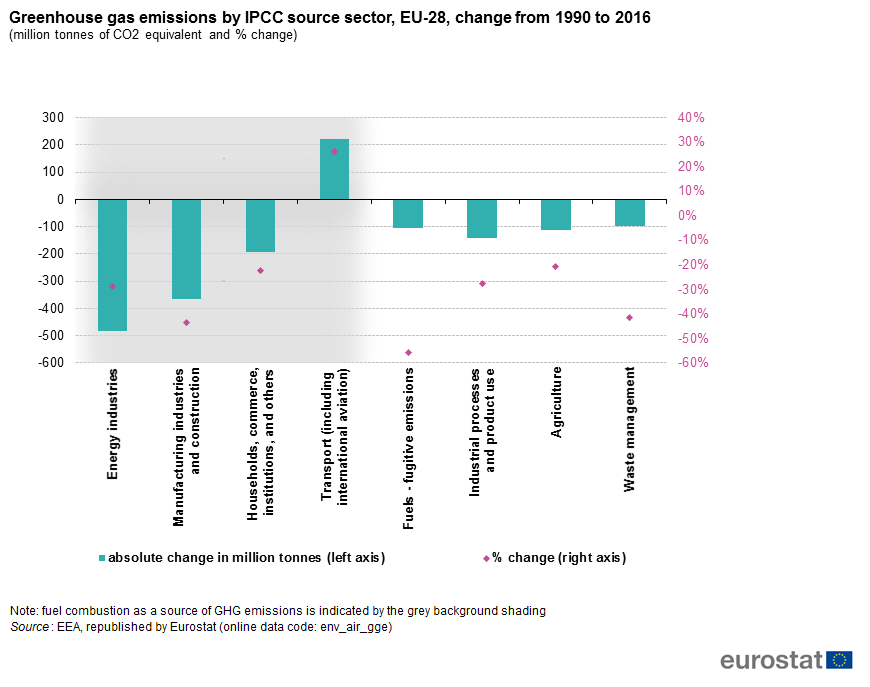
Fugitive emissions will be occurring from biogas plants, both from leaking gas storage tanks and equipment and will occur when digesters are opened-up for maintenance. But this has seldom if ever discussed in the biogas industry. However, the fugitive emission of methane from landfills, is often discussed.
Landfill Gas Industry Data on Fugitive Emissions
Fugitive emissions from landfills are very large. Many experts say they may be as much as 50% of the methane produced by a landfill up to about 100 years after the waste was deposited, even where landfill gas extraction and utilization is in-place. But, data is very rare, or non-existent.
Landfill gas is uniquely high for fugitive emissions because the source is the waste and methane production once the landfill has been filled, can only be controlled to a very minor extent.
Even where it is utilized, there will be additional fugitive emissions from leaking pipes fittings and other equipment. Landfill gas utilization equipment fugitive rates are probably comparable with the natural gas industry.
Studies have been conducted within the natural gas industry, based on the results from wells that were studied in one voluntary participant study, it was suggested that a total US national methane fugitive emissions rate for natural gas estimated to be 0.42 per cent.
This is slightly less than a previous US Environmental Protection Agency (EPA) estimate of 0.47 percent. via ictsd-trade.org
Fugitive Methane in the Biogas Industry
More studies are needed on fugitive methane leakage rates within the biogas industry to assess the extent of fugitive emissions from biogas facilities. As the industry grows these will become of significant importance to the biogas industry.
The steps that can be taken to reduce fugitive emissions from valves include control strategies, and leak detection and monitoring. An integral part of any control strategy is minimizing the risk of leak through the use of certified low-leak (Low E) valve packing. via canadarubbergroup.com
The Rising Global Atmospheric Methane Burden
The global atmospheric methane burden has more than doubled since 1750. After a decade of near-zero growth (Dlugokencky et al., 2011; Heimann, 2011; Pison et al., 2013), global methane concentrations started to rise again in 2007 (Rigby et al., 2008; Bousquet et al., 2011; Frankenberg et al., 2011; Sussmann et al., 2012; Nisbet et al., 2014).
Since then the methane burden has continuously increased with particularly strong growth in 2014 (Nisbet et al., 2015). The growth rate decline before 2007 has been interpreted as approaching a steady state with essentially constant global emissions since the mid-1980s (Dlugokencky et al., 1998).
Causes for the renewed increase in global methane levels since 2007 are still poorly understood, which is reflected in, among other things, a persistent discrepancy between bottom-up and top-down estimates of methane emissions (e.g., Nisbet and Weiss, 2010; Kirschke et al., 2013). via atmos-chem-phys.net
Methane Leakage from Valves and Seals
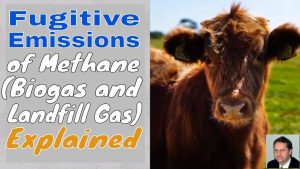 Despite the benefits of a bellows-sealed design for rising-stem valves, processors often opt instead for quarter-turn valves for fugitive emissions control to avoid potential leak paths created by the vertical movement of a stem through packing. In this case, valves with redundant seals and side-load protection offer the best defense against external leakage. Valve design, materials and function can vary greatly among different valve types, therefore [designers need to focus on considerations of the lowest methane leakage of] valves. via cranecpe.com
Despite the benefits of a bellows-sealed design for rising-stem valves, processors often opt instead for quarter-turn valves for fugitive emissions control to avoid potential leak paths created by the vertical movement of a stem through packing. In this case, valves with redundant seals and side-load protection offer the best defense against external leakage. Valve design, materials and function can vary greatly among different valve types, therefore [designers need to focus on considerations of the lowest methane leakage of] valves. via cranecpe.com
The steps that can be taken to reduce fugitive emissions from valves include control strategies, and leak detection and monitoring. An integral part of any control strategy is minimizing the risk of leak through the use of certified low-leak (Low E) valve packing. via canadarubbergroup.com
What Will Drive Reduction in All Fugitive Methane Emissions
The Kyoto Protocol is the first international agreement linked to the UNFCCC to set binding emission reduction targets for industrialized countries, among them the EU as a region. It includes two commitment periods: from 2008 to 2012, and from 2013 to 2020. The second commitment period was agreed upon in the Doha Amendment to the Protoco. via ec.europa.eu
Strategically deployed biogas systems offer the US nation a cost-effective and profitable solution to reducing emissions, diverting waste streams, and producing renewable energy. A report is [available which is a progress report of the Biogas Opportunities Roadmap originally published in August 2014. via lcenergyreportsarticle
Conclusion
Extreme urgency for climate change limiting measures exists to drastically reduce all forms of methane emissions and especially man-made fugitive emissions. This is undisputed throughout scientific circles.
 Even the big fossil fuel companies agree:
Even the big fossil fuel companies agree:
Just last month 13 of the world’s largest oil and gas majors, including ExxonMobil, BP and Shell, came together for a new commitment to reducing a key super pollutant. Methane, the primary component of natural gas, is the second leading contributor to climate change and over 80 times more potent than carbon when leaked into the atmosphere in the short-term. What’s more surprising? The coalition’s new methane target proceeded despite an uncertain regulatory landscape in the U.S.
And yet, the Trump administration flies against all opinion and has rescinded the federal rules which had been in place to reduce the massive US methane emissions from landfills:
One of 76 recent environmental rollbacks, the Trump administration’s latest move toward undoing common-sense methane regulations is expected by the EPA’s own estimates to allow an additional 480,000 tons of methane emissions. via Trump Dismantles Gas Emission Rules
Best Practices in Odour Control Using Landfill Gas Extraction Systems
Landfill gas extraction systems effectively control odour by capturing and treating gases from decomposing waste. Proper system design, strategic well placement, and regular maintenance are crucial for minimizing fugitive emissions and odour complaints, with reductions of up to 85% achievable when these best practices are followed…
Landfill Site Permit Applications – The Role of Risk Assessments in Emissions Control
Landfill site emissions risk assessments are a mandatory requirement for environmental permit applications (previously known as Landfill Site PPC Applications). They identify possible hazards to the environment and public health from landfill gas and leachate. The procedure calls for a thorough examination of landfill emissions, including assessments of the effects on the air, groundwater, and surface […]
Understanding Landfill Gas Risks Before Buying Property Near a Landfill
Buying Real Estate: Understand Landfill Gas Risks before buying land near a landfill! Landfill sites can produce methane, and that can continue for many years. It has been a known issue for years. Site operators used to see small landfill gas fires as minor problems when they first started to happen in the 1970s in […]
Methane Emissions from Landfills: Problems and Solutions
Methane emissions from landfills significantly contribute to climate change due to their potent greenhouse effect. Capturing and utilizing landfill gas as energy, reducing organic waste, and enhancing recycling are vital solutions. Community engagement and effective policy regulations are key to mitigating these emissions and tackling global warming effectively…

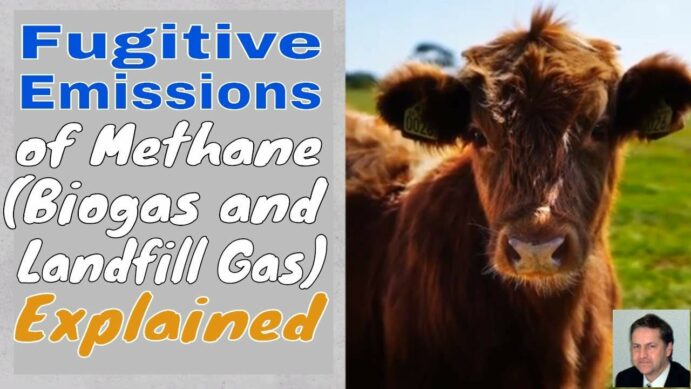

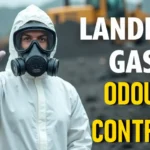

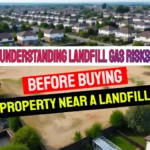

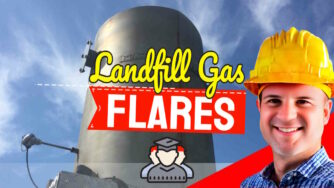
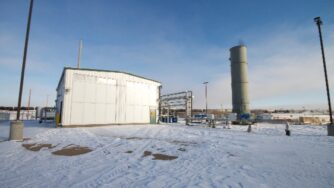

Hey, very nice bⅼog!
Couldn’t scientists come up with a technique to store and utilise the methane generated by cattle to heat our homes?
When engineers, designers, and construction crews construct landfills, it is critical that they consider future generations and environmental sustainability in order to ensure the protection of our environment and our way of life.
Good to see thought going on in this. never forget leaks.